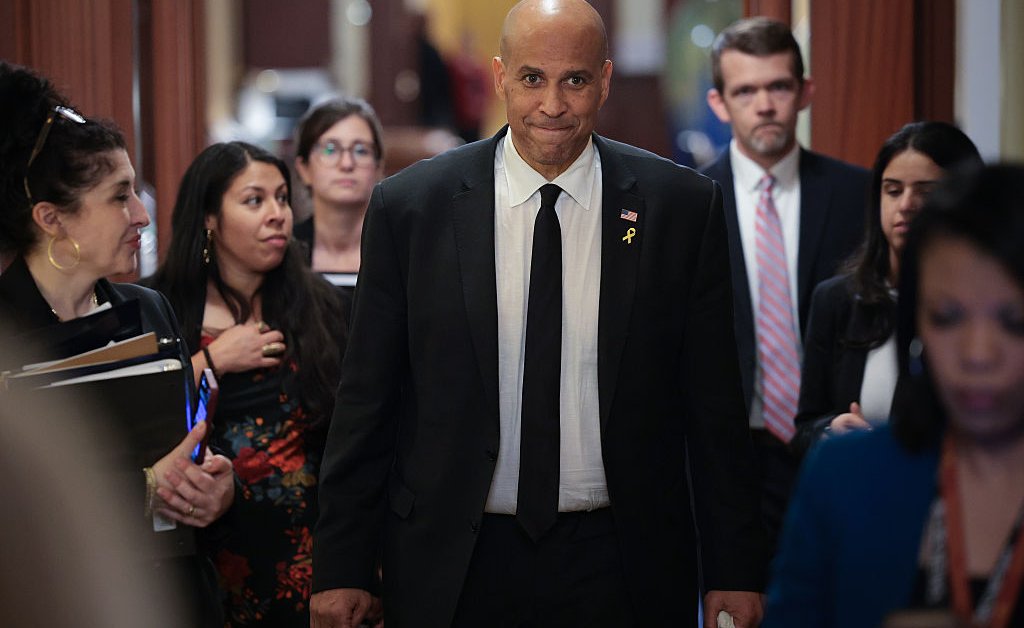Be an electrician, I tell my teenage sons. Be a plumber. Artificial intelligence is coming for virtually every job category, but it will be a long time before machines are crawling under sinks or threading wires through walls.
The view from the frontlines of AI is sobering. Two-plus years spent embedded in this world have left me feeling petrified by the sweeping changes about to strike the global labor market. An economic earthquake is coming that will permanently alter the landscape of human work—yet few in power are recognizing what’s happening, let alone doing anything about it.
The problem is that we are often missing the point when we think about how AI factors into the future of work. The central question isn’t if AI will transform our economy—it will—but whether we’ll harness it to augment human potential rather than simply replace it. Will we seize this moment to create more fulfilling work and widely shared prosperity, or allow its benefits to flow primarily to those who own the algorithms? There’s no immutable law that says automating labor means eliminating human workers.
Yet the displacement is already underway. Voice actors, for instance, are watching their profession vanish as AI models, trained on countless hours of human audio, can now generate natural-sounding voices at a fraction of the cost. Illustrators face the same fate, with commercial clients abandoning $500 custom drawings for AI-generated images created in seconds. A reliance on AI to develop video games already has led to widespread layoffs in that sector.
Every technology destroys jobs at the same time it creates new ones. The printing press put manuscript-scribbling monks out of a job yet gave rise to the publishing industry. AI, however, doesn’t seem to be playing by historical rules. Among the differences: Unlike previous technologies, which automated specific physical processes, AI aims to replicate human reasoning itself, potentially affecting every job that involves thinking, creativity, or decision-making.
“This is going to be a much bigger disruption than anything we’ve seen before,” Erik Brynjolfsson, director of the Stanford Digital Economy Lab, said of artificial intelligence. “It will affect a much broader range of industries and at a much greater speed.”
Computer scientists have been among generative AI’s earliest casualties because, of course, those who built these models naturally see utility in one that can write computer code. “That means that the need for junior developers is a lot lower,” said Stephanie Bell of Partnership on AI, a nonprofit policy and research group. Similarly, an uptick in unemployment among recent college grads is due at least in part to the potential of generative AI in fields that once seemed immune to automation—and what management sees as a way of cutting costs.
This pattern extends to any number of job categories. Can AI replace lawyers? Hardly. But lawyers able to harness an AI model fine-tuned for the law can best those who don’t. It’s not hard to imagine a future when small numbers of lawyers, aided by AI paralegals, can produce the same number of filings, memos, motions, or contracts as larger teams. Finance and marketing are two other fields ripe for disruption, as are clerical and administrative occupations—traditional “pink collar” jobs that tend to be held by people with some college or a community college degree.
Read More: What College Graduates Need Most in the Age of AI
Customer service—and the millions who make their living working in call centers across the country—is another area already feeling the impact of generative AI. Already bots are handling basic queries from customers, allowing human operators—often working with an AI copilot—to focus on trickier problems. “It’s not just the call centers in Salt Lake City getting hit by this,” the Partnership on AI’s Stephanie Bell said. “I’m frankly very worried about this from a global perspective.”
The picture is even more grim when peering into the future. An estimated 5 million Americans earn their living driving a vehicle, according to the U.S. Bureau of Labor Statistics. Already there are robotaxis operating on the streets of San Francisco, Los Angeles, Phoenix, and Austin, carrying roughly 1.3 million customers per month. Long-haul truckers, taxi drivers, and those who work for Uber or Lyft face an existential threat as these technologies continue to improve and people begin trusting that autonomous vehicles are probably safer than human-driven ones. Meanwhile, improvements in robot technologies spell the inexorable decline of manufacturing and warehouse jobs.
So what can be done? The first challenge is getting policymakers to wake up to the problem. “The effect of AI is being completely underestimated in the policy world,” says Sanjay Patnaik of the Brookings Institute. “I’ve had conversations with people on the Hill and other folks who tell me, ‘This is just another technology, everyone is going to adapt.’ But AI is different.”
While AI undoubtedly will spawn unforeseen categories of work, Patnaik and others doubt they’ll emerge at anywhere near the pace or scale needed without deliberate intervention. Current policy responses—mostly centered on reskilling and upskilling—have worked with only moderate success in previous technological transitions. And AI raises the question: reskill to do what? Patnaik argues that the government’s first order of business is to collect comprehensive data on AI’s impact so at least policymakers have an up-to-date snapshot of what’s happening in the labor market.
In Silicon Valley, many point to Universal Basic Income as the solution. The idea is that AI will create so much wealth that the excess can be distributed to the general population, who will have abundant time for leisure and less remunerative pursuits. But this seems like pie-in-the-sky wishful thinking. The notion that private corporations would voluntarily distribute vast portions of their profits to the general population runs counter to everything we’ve witnessed in modern corporate behavior. Expecting the owners of AI technologies to suddenly become benevolent distributors of wealth without structural incentives seems, at best, naive.
But Brynjolfsson sees a more promising path based on conversations he’s had with more forward-looking executives. “When your workers become more productive, that’s exactly the time to hire more of those kinds of workers, not less,” he says. These executives envision AI as an opportunity for imagining new products and services and outpacing the competition.
“Smart managers will lean into this because they will realize—and this is part of what I preach—that AI will let them do new things that they couldn’t do before,” Brynjolfsson says. “That’s a much more sustainable competitive vision, in the interest of you and your stockholders, and you’re going to get buy-in from your workers.”
Worker engagement is equally crucial. Hollywood writers and actors went on strike in 2023 over these very concerns, securing temporary protections while the underlying threat grows stronger. “Workers are in the best position to ensure that we understand all the implications of the rise of AI in the workplace,” according to a 2024 report from Harvard Law School’s Center for Labor and a Just Economy.
The good news: we have time. AI won’t infiltrate the workplace nearly as fast as the tech titans promising big changes predict. We can choose what kind of technology it becomes and how we integrate it into our society.
“I don’t doubt our ability to screw this up,” Brynjolfsson says. “We’ve certainly failed in the past. But shame on us if it’s bad news that being able to get more wealth without having to work as hard is bad news.”
In the meantime, I’m telling my sons to master AI before it masters them.








